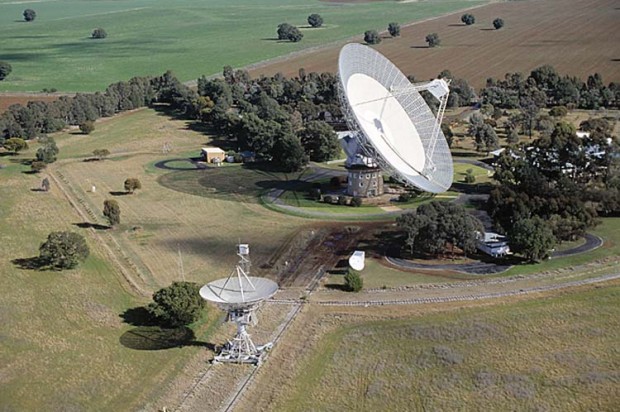
© Wikimedia, CSIROThe Parkes radio telescope in Australia.
Every now and then things go "bump!" in the cosmic night, releasing torrents of energy that astronomers can't easily explain. Not that they mind: most times an energetic riddle flares up in their view of the sky, major epoch-setting discoveries are sure to follow. This was the pattern for pulsars - rapidly spinning city-size stellar remnants that steadily chirp in radio. It was also the pattern for
gamma-ray bursts - extreme explosions at the outskirts of the observable universe thought to be caused by stellar mergers and collapsing massive stars. Now the pattern is playing out again, with last week's announcement that an international team of researchers has detected brief, bright bursts of radio waves washing over Earth from mysterious sources that may be billions of light-years away. The findings, reported in the
July 5 Science, could open an entirely new window on the universe by allowing scientists to measure the composition and dynamics of the intergalactic medium - the cold, diffuse plasma that lies between galaxies.
Using a year's worth of data gathered from some 10 percent of the sky by the 64-meter Parkes radio telescope in Australia, the team detected four bursts from far outside the galactic plane, each occurring only once and lasting a few thousandths of a second. According to Dan Thornton, a PhD candidate at the University of Manchester in England who led the study, the results suggest that these "fast radio bursts," or FRBs, probably occur as often as every 10 seconds or so, nearly 10,000 times a day. "If we had radio telescopes watching the entire sky, that's how many we think we'd see each day," Thornton says. "We haven't seen more of these until now only because we've been looking at small regions of the sky for small amounts of time."